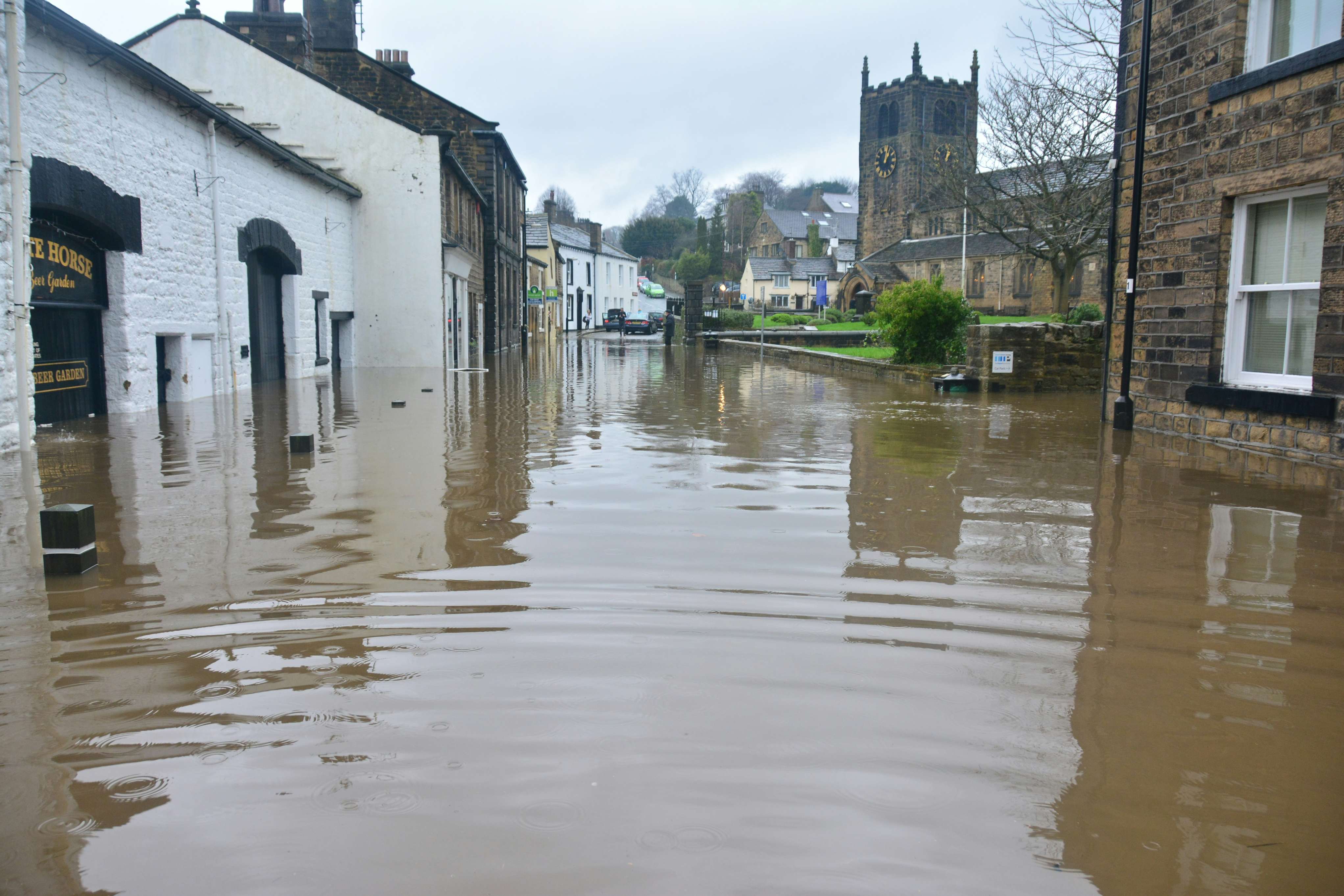
Monsoon is here. And along with the mayhem it brings, in Indian cities, it also brings waterlogging. Streets turn into rivers overnight, and many people find themselves wading through knee-deep water just to reach home or work.
But things can take an ugly turn when it is not just inconvenience. It can actually be far more dangerous than most realise.
Floodwater? Swimming Pools
Paradoxically, social media is flooded with videos of people treating these dangerous waters as swimming pools.
Recent footage from Mumbai floods shows people casually swimming in contaminated floodwater, with these clips rapidly going viral across social media platforms. This is not just limited to Mumbai.
Just weeks earlier, a police officer in Uttar Pradesh's Prayagraj became an Internet sensation. Standing waist-deep in water inside his own flooded home, he maintained his sense of humour: "Thousands go to her [referring to the Ganga]. I didn't have to go anywhere, she came to bless me."
The officer, Mr Nishad, didn't stop there. In one viral clip, he's seen diving from his first-floor window into the murky water below, though he does warn viewers to not copy his dangerous stunt.
Another video shows him jumping from his second floor alongside two young women, captioning it: "Humari chhoriyan chhoro se kamm hai ke? (Are our girls any less than boys? - the viral dialogue from Dangal) Jai Ganga Maiya."
Similar videos popped up on social media from Gurugram as well, where people were seen jumping in floodwater.
However, doctors warn that floodwater is not just rainwater, it's a toxic mix of sewage, chemicals, and germs that can leave lasting damage on the body.
How Exactly Is Floodwater Dangerous
"Floodwater poses a health risk because it may contain sewage, chemicals, sharp objects, and germs," explains Dr P Venkata Krishnan, Senior Consultant, Internal Medicine, Artemis Hospitals.
"When walking in floodwater, you are more likely to become sick, injured, or infected. Even when the water is shallow, a fast current can sweep you away," he adds.
The illusion of harmlessness is what makes floodwater deceptive.
Dr NR Shetty, Consultant, Internal Medicine, Kokilaben Dhirubhai Ambani Hospital, Mumbai, warns that people often think wading through water is a quick solution.
"Floodwater is not rainwater, they are sewage, industrial waste, trash, and even chemicals washed from farms and factories. This poisonous concoction becomes a fertile breeding ground for bacteria, viruses, and parasites. When humans come in contact with this water, they are essentially putting themselves in touch with disease-inducing organisms," he adds.
Floodwater also often carries sharp objects, broken glass, and metal pieces hidden beneath the murky surface. Injuries from these not only hurt in the moment but can lead to tetanus or other infections if left untreated.
Children, who are usually more playful in the rain, face even higher risks when they wade or swim in stagnant water.
What Happens To Your Body When You Walk Through Floodwater
Every small scratch or blister on your skin becomes an entry point for bacteria. If you have cuts or wounds, bacteria from dirty flood water can easily get into your body and make you sick.
Dr Shetty points out that the risks go beyond skin-level infections.
He says the greatest risk is when the dirty water gets inside the body via cuts, scratches, or even small abrasions on the skin. This may cause leptospirosis, a frequent post-flood infection in India.
"Constant exposure to dirty water can also cause rashes, itching, fungal infections, and swallowing even small amounts can result in diarrhoea, cholera, typhoid, or Hepatitis A," says Dr Shetty.
"Even the eyes and ears are not spared. Many patients experience redness, irritation, or ear pain after exposure. And prolonged wading in floodwater can lead to trench foot, painful swelling, numbness, and sores in the feet that can take weeks to heal," he adds.

If you have cuts or wounds, bacteria from dirty flood water can easily get into your body and make you sick. Photo: Unsplash
Gastrointestinal illnesses are another hidden danger, points out Dr Shetty, "Contaminated water can easily enter the mouth, sometimes even unintentionally, leading to Hepatitis A, cholera, and severe diarrhoeal infections that spread quickly in communities already struggling with disrupted healthcare access."
"In severe cases, bacteria can travel through the bloodstream and trigger sepsis, a life-threatening condition. So, what seems like 'just a small wound' can quickly escalate when exposed to contaminated water," explains Dr Vishwanath BL, Consultant - Internal Medicine, Manipal Hospital Kanakapura Road, Bengaluru.
What Happens When The Water Recedes
It's a common misconception that once the water goes down, the threat disappears. In fact, doctors say this is when new dangers emerge.
"After the floods, there is still water and wet debris on the ground. They help mosquitoes breed, spread germs, and grow mould," says Dr Krishnan. This can lead to infections, dengue, allergies, and other health issues, making people unsafe even after the floodwater recedes.
Dr Shetty agrees. He says stagnant water left behind becomes the perfect breeding ground for mosquitoes, increasing cases of malaria, dengue, and chikungunya.
Mud and silt left by floods are often full of bacteria. Wells, pipelines, and food items may also stay contaminated for weeks. Damp walls and furniture encourage mould growth, leading to breathing problems, particularly in children, the elderly, and people with asthma.
Even homes that look unaffected may hide damp corners where fungus grows, making recovery longer and more complicated. In the weeks following floods, hospitals usually see a surge in fever cases, respiratory infections, and skin complaints, all linked to the after-effects of floodwater.
How To Protect Yourself During Floods
Doctors strongly advise avoiding direct contact with floodwater whenever possible. But if it cannot be avoided, precautions are critical.
According to Dr Tushar Tayal, Consultant, Internal Medicine, CK birla hospital Gurugram:
- Always wear protective footwear and gloves while wading through water
- Cover cuts and wounds with waterproof bandages
- Wash thoroughly with clean water and soap after exposure
- Drink only boiled or filtered water
Remember to keep an eye on warning signs like fever, persistent diarrhoea, cough, or unusual skin changes.
Vaccinations for tetanus and Hepatitis A are also recommended by experts that we spoke to in flood-prone regions.
"Floodwater may look harmless, but they are filled with hidden dangers. Protecting yourself and your family requires awareness and caution, both during the floods and long after the water has receded. Prevention is always safer than treatment," says Dr Shetty.
Bottomline
Floods are part of the monsoon reality in many Indian cities and towns. While people often see wading through water as a small inconvenience, the truth is that it can open the door to infections, long-term illnesses, and in some cases, life-threatening diseases.
Floodwater may look harmless, but they are filled with hidden dangers. Protecting yourself and your family requires awareness and caution, both during the floods and long after the water has receded.
Track Latest News Live on NDTV.com and get news updates from India and around the world

